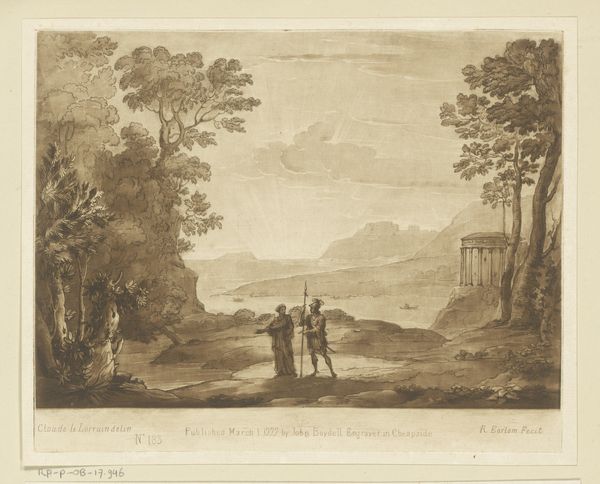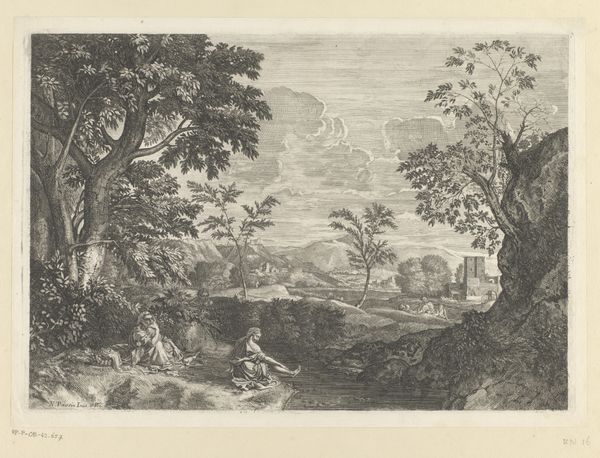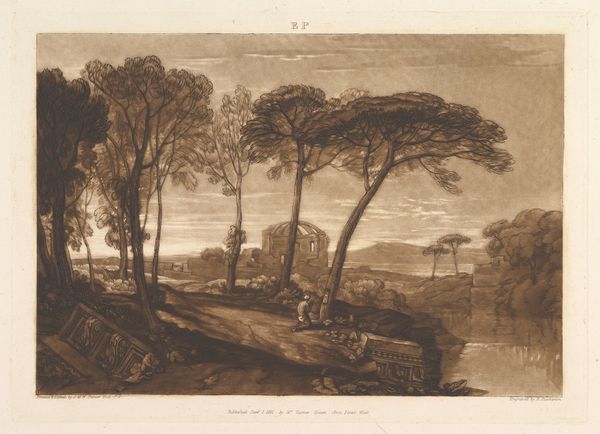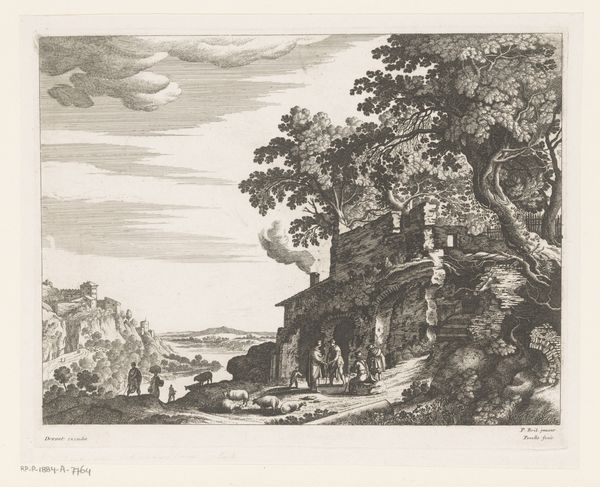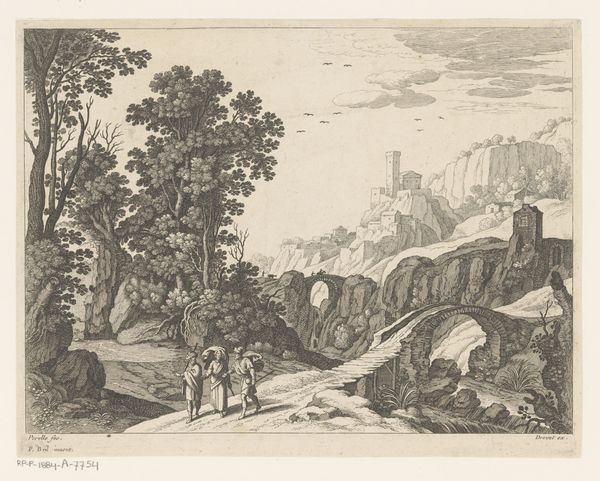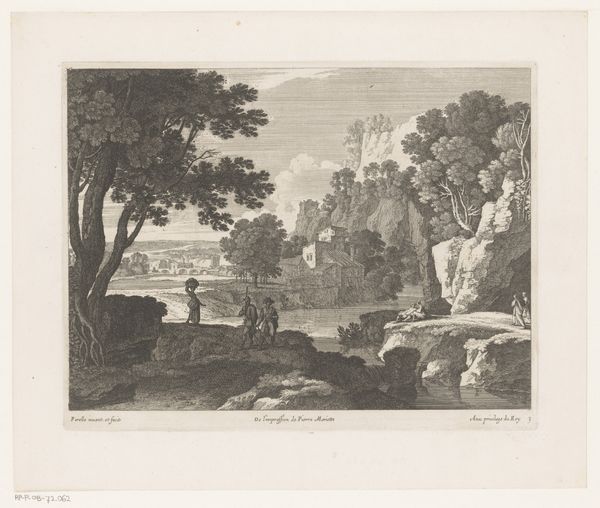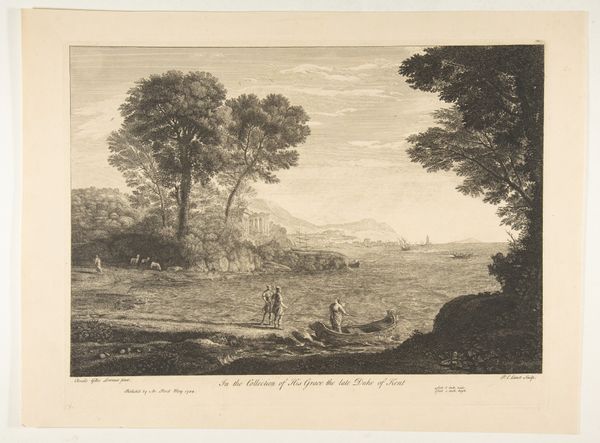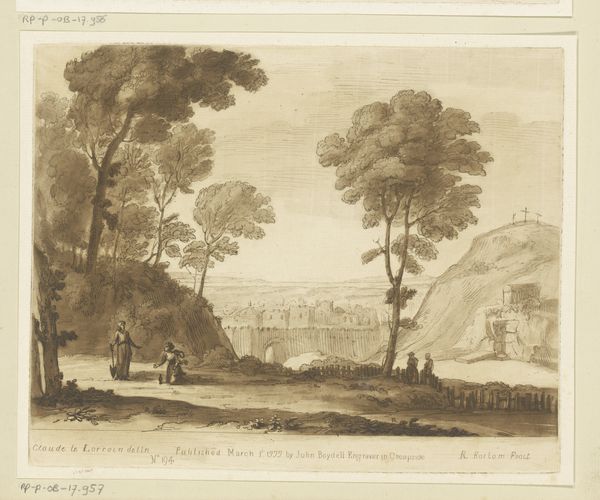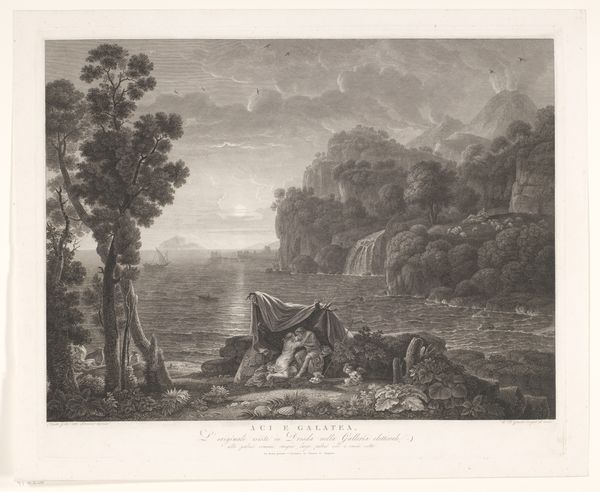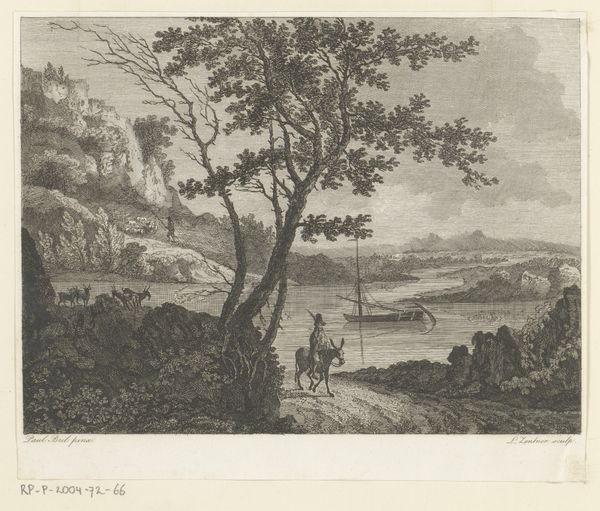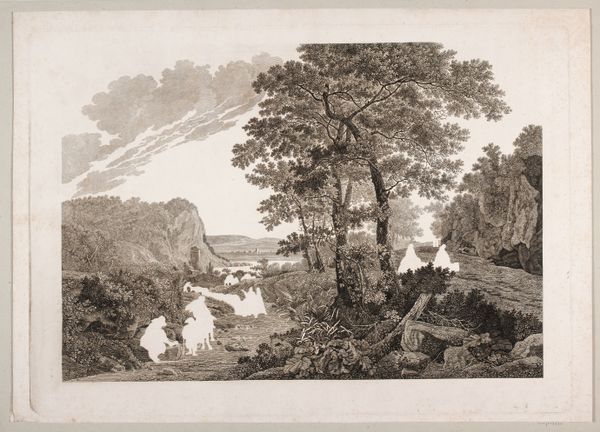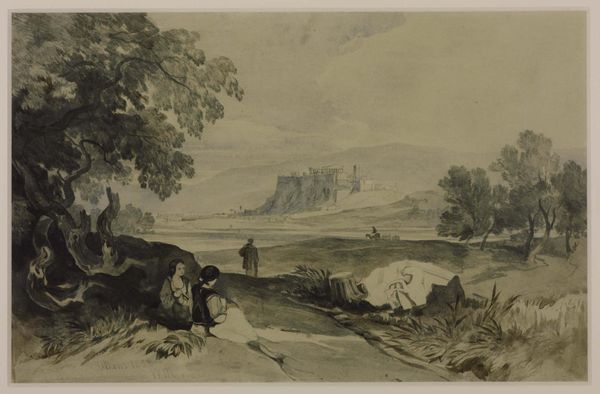
Seascape, after Claude Lorrain's "Liber Veritatis" 1815
0:00
0:00
drawing, print, engraving
#
drawing
# print
#
landscape
#
cityscape
#
engraving
Dimensions: Plate: 8 3/8 × 10 11/16 in. (21.2 × 27.2 cm) Sheet: 10 5/8 × 12 3/8 in. (27 × 31.4 cm)
Copyright: Public Domain
Ludovico Caracciolo made this print in the 19th century, after Claude Lorrain's "Liber Veritatis." It’s an engraving on paper, a medium that allowed for wider distribution of images and ideas. This seascape, with its classical ruins and serene atmosphere, reflects the enduring influence of classical ideals on European art. The print was made in Italy, a region steeped in history and artistic tradition. We should ask ourselves, how might the physical landscape and historical consciousness of Italy have shaped Caracciolo’s artistic vision? And how does this particular image speak to the cultural values of the time? The presence of classical ruins invites reflection on the rise and fall of civilizations. To fully understand this work, one would want to consult historical archives, artists' biographies, and critical literature. Art, after all, is not created in a vacuum, but is the product of specific social, cultural, and institutional contexts.
Comments
No comments
Be the first to comment and join the conversation on the ultimate creative platform.
